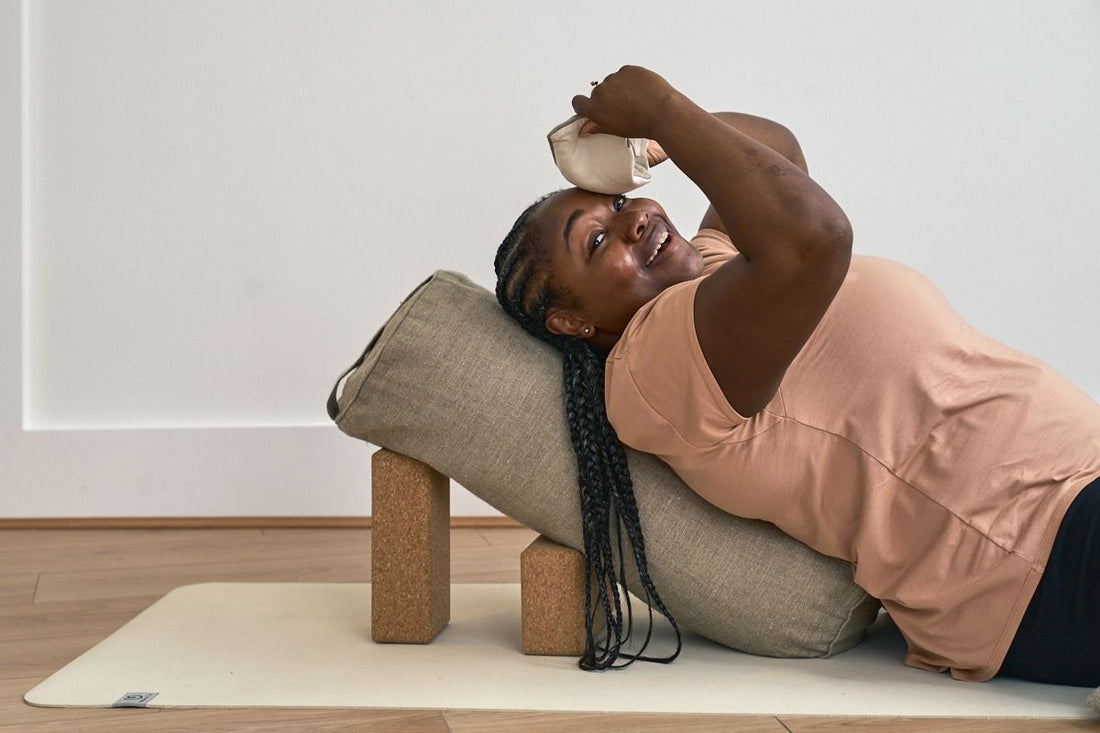

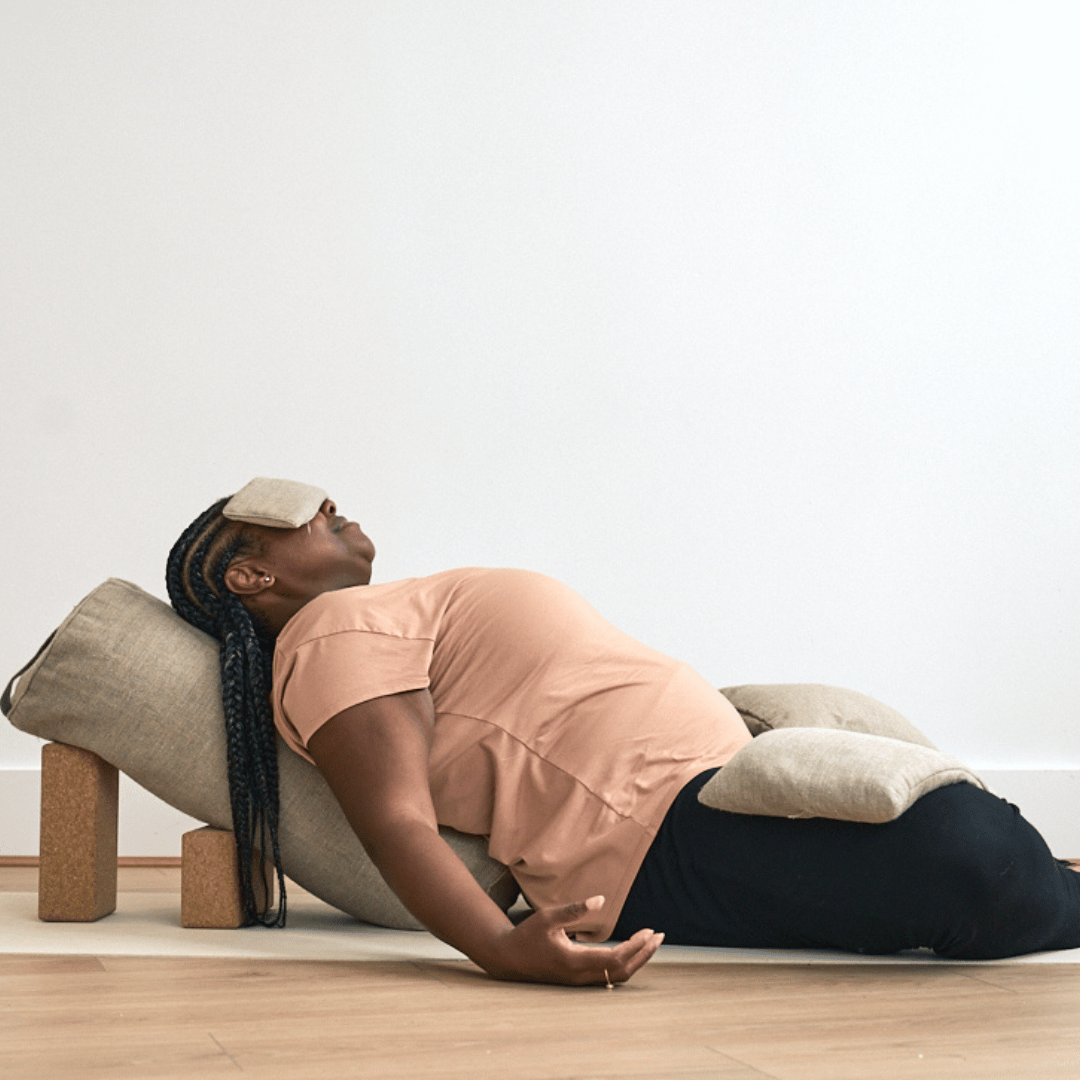
Reclining Butterfly
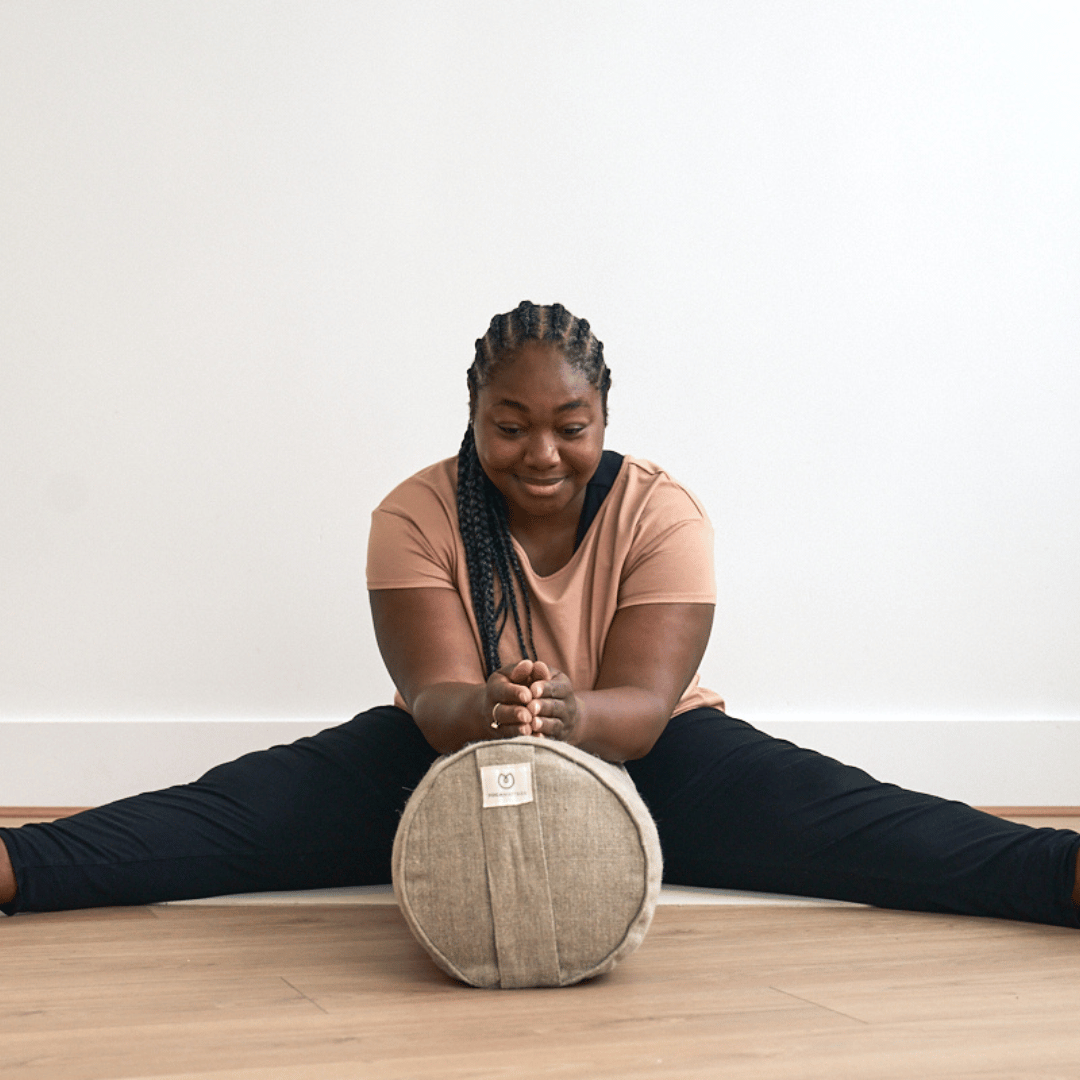
Dragonfly
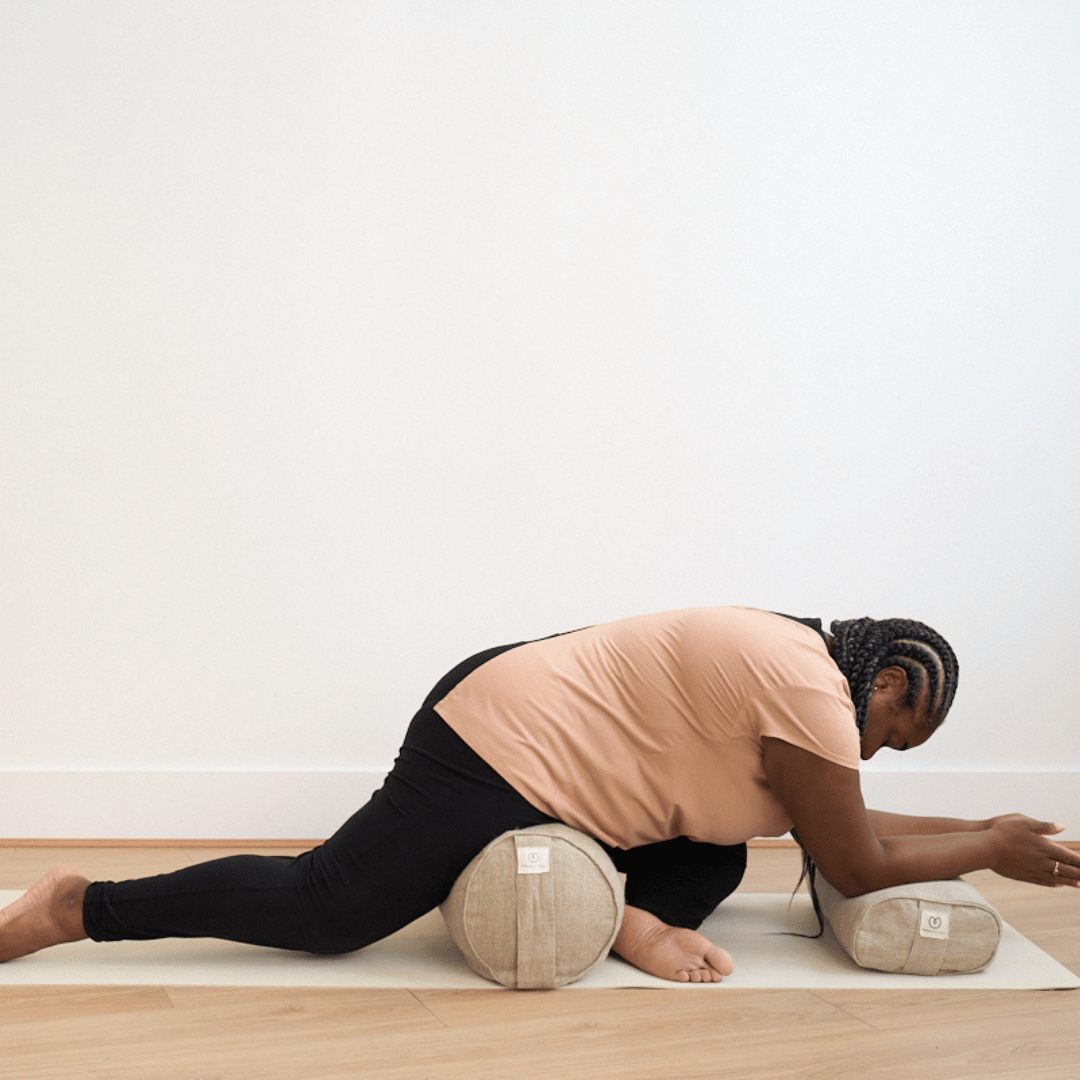
Sleeping Swan
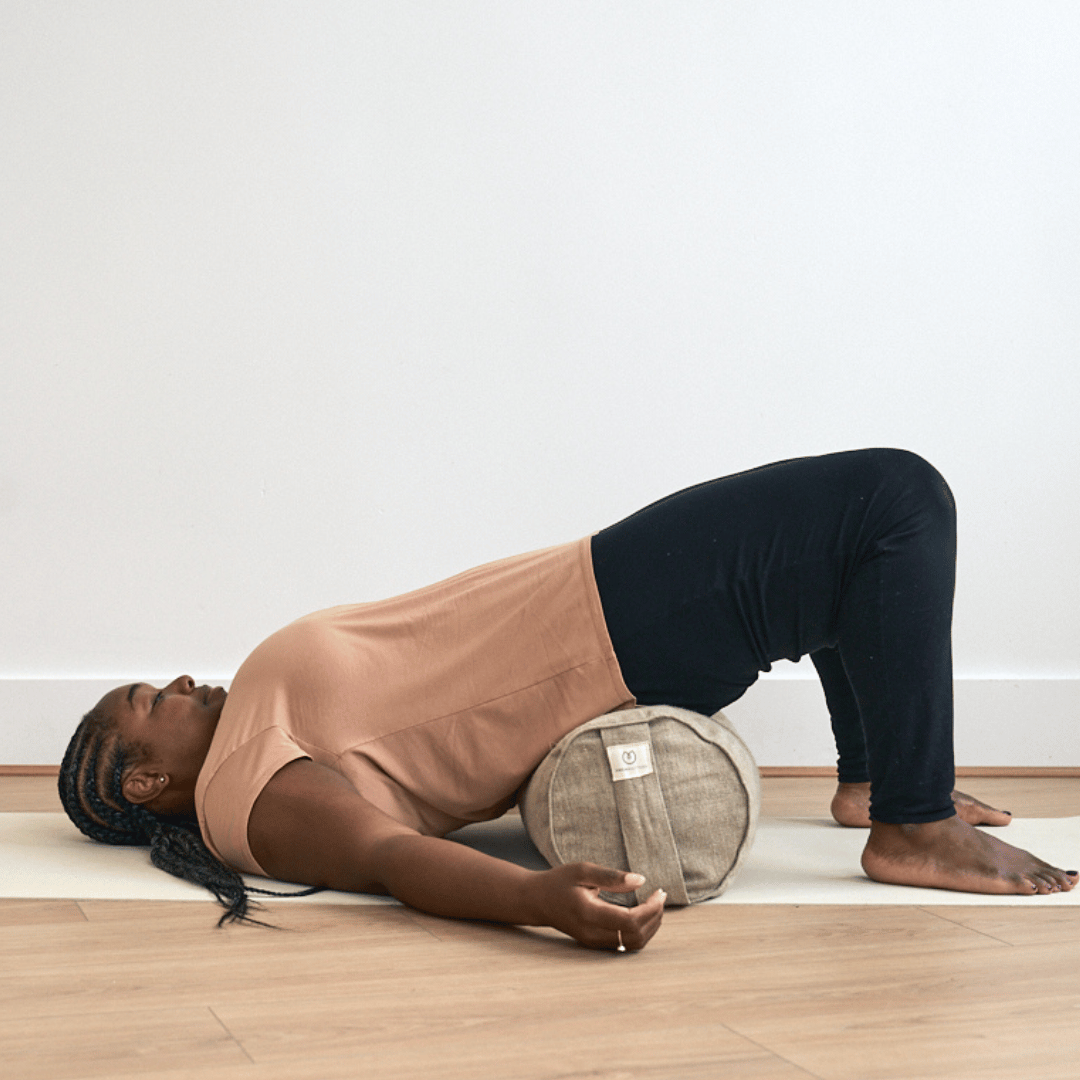
Inversion with Bolster Support
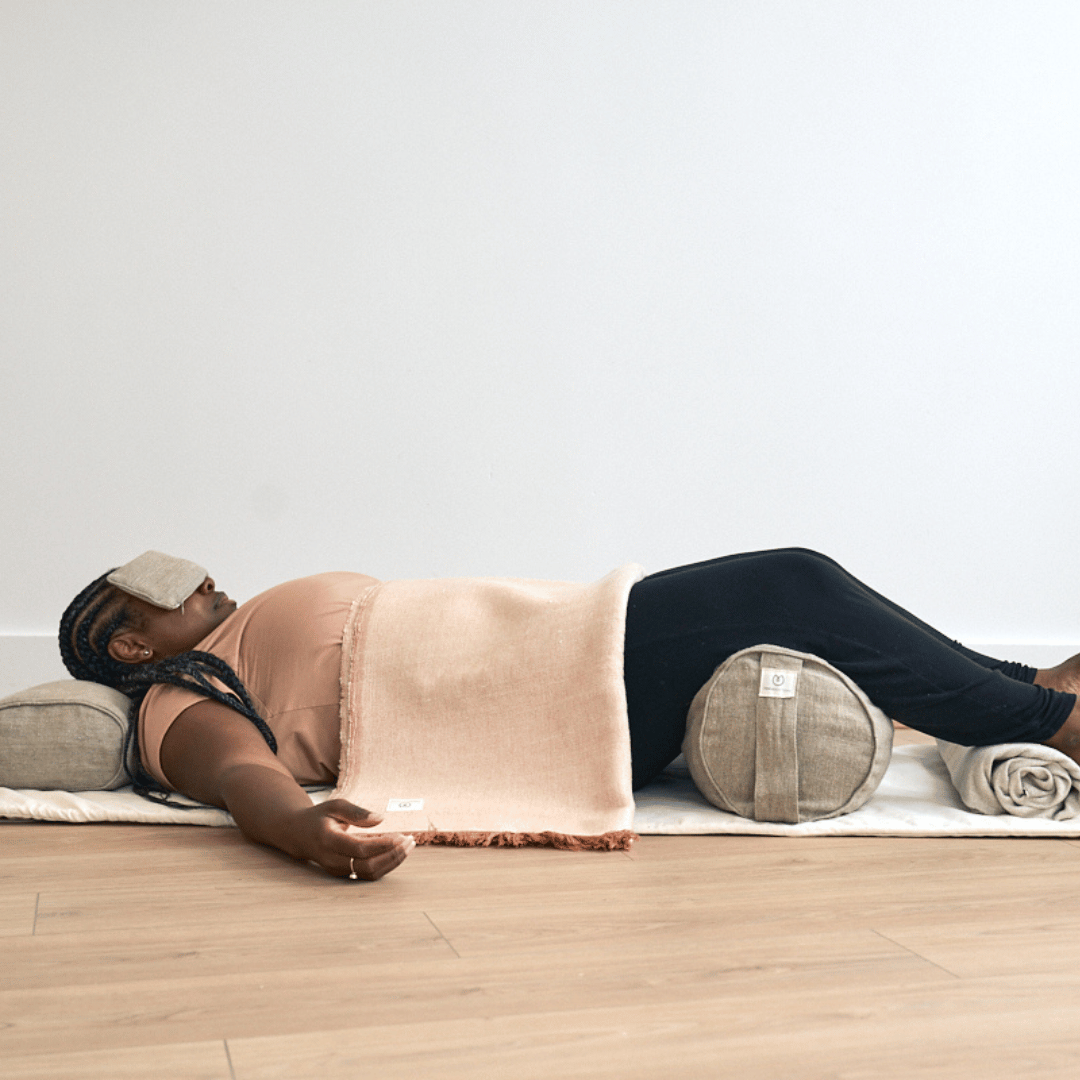
Free UK delivery on orders over £75*
Express delivery options available
30-Day returns
Sign in or Create an account

Yin yoga is calming, meditative practice with its roots in the Chinese philosophy of Taoism. In this predominantly floor-based practice, we usually allow ourselves to be in each posture for around three to five minutes. While physically, the focus is on moving deeper into the body’s connective tissues, energetically, the meridians (energy channels) through which our Qi (life force or energy) flows are stimulated in the poses we practise. In Chinese medicine, our organs are associated with our emotions and the intricate network the meridians form in our bodies.
In Chinese culture the menopausal years are viewed as a positive transition to a place of renewal, new opportunities and wisdom – our second spring (postmenopause). In Chinese medicine, menopause symptoms are viewed as an imbalance in our internal yin and yang and the menopause is primarily seen as a Kidney Yin deficiency. The Kidneys play a crucial role in the ageing process, controlling the balance of our yin/yang and the cooling of our bodies. (Certain common symptoms such as thinning hair, osteoporosis, hot flushes and anger, for example, are associated with excess heat.) Also, excess stress affects the Kidneys. A few symptoms associated with weakened Kidney Qi include brain fog, tinnitus, difficulty concentrating and urge incontinence. (The Kidneys are the yin partner to the Bladder, and they govern the brain and bone marrow, the latter relating to loss of bone density – re. increased osteoporosis risk – as we age. The ears are the Kidney’s sensory organ and fear is the associated emotion, which can appear as anxiety, another common symptom.) In relation to this, also implicated here is Liver Qi stagnation and the decline of Spleen function. Just a few of the additional menopause symptoms that can manifest as a result include vaginal dryness, insomnia, constipation and drier skin, hair and nails.
When we consider all of the above, it becomes clearer why during our menopausal years it’s particularly important to tend to our Kidney energy. Yin yoga by its nature is a cooling practice we can engage in to help balance some of the aforementioned excess heat. Yin yoga can also help us to move away from a stressed (sympathetic nervous system) state to a calm (parasympathetic nervous system) state – this is very helpful as stress negatively impacts the Kidneys, and it’s known that stress can worsen menopause symptoms. With all of this in mind, the poses in the following yin sequence primarily target the Kidney meridian lines as well as the Liver and Spleen.

Suggested props: A bolster, two cork bricks. (Optional: an eye pillow.)
How to: Create an incline by propping your bolster up on two bricks, as shown. (If you’d prefer to invite more of a backbend, prop up your bolster with one brick or omit the blocks completely and use just the bolster.) Sit at the lower end of your bolster and carefully lie back so that your upper body is supported. Bring the soles of your feet together and let your knees fall out to either side, forming your Butterfly shape. If you’re using an eye pillow here you can place it over your eyes or alternatively, rest it along your forehead and eyebrow line. Allow yourself to be here for 1 to 5 minutes.

Suggested props: A bolster. (Optional: a flat block or folded blanket to sit on.)
How to: Sitting on your mat, take your legs out as wide as feels comfortable for your hips. (If it feels more comfortable to elevate your hips here, sit on a flat block or a folded blanket.) Place a bolster in front of you for support and ease your upper body into a forward fold moving from your hips. Allow your spine to round and your neck to relax. Depending on your flexibility you may wish to rest your upper body on your bolster or use it to rest your forearms, as shown. Allow yourself to be here for between 1 and 5 minutes.

Suggested props: A bolster, a cork brick and a small rectangular bolster.
How to: Place a bolster about halfway up your mat. Sit on your bolster with the soles of both feet on your mat in front you. Carefully lower your left knee down towards the mat and extend your right leg behind to into your Swan position. To move into Sleeping Swan, lower your upper body and rest your forehead on a brick. (If you would prefer to add padding for your forehead here, place an eye pillow on top of the brick.) Let your forearms rest comfortably on your mat in front of you along a small bolster. Allow yourself to be here for between 1 and 5 minutes before repeating on the other side for the same duration.

Suggested props: A bolster. (Optional: a belt if placing legs up)
How to: Place a bolster just over halfway up your mat. Sit on your bolster with the soles of both feet flat on your mat with more mat space behind you. (If you’re using a belt here to support your legs, create a belt loop that is your hip distance in width and slide your feet through the loop. Rest the belt loop either at mid-calf or mid-thigh level.) Place palms on your mat behind you so that your arms can support you as you lift your hips, slide forward slightly and rest your sacrum (back of your pelvis) on the bolster. Carefully lower your shoulders and upper back down to your mat so that you’re in a supported bridge position. You might wish to stay here or you can lift your legs into the air. Arms can rest by your side or place palms on your lower abdomen. Alternatively, you can reach arms back onto your mat behind you or place your arms in a cactus shape on the floor. Depending on whether your legs are elevated or not, allow yourself to be here for 1 to 5 minutes.

Suggested props: A bolster, two blankets, a small rectangular bolster, an eye pillow, a restorative yoga mat
Close with a final relaxation. The use of props (as shown) is optional, but they do help to create the conditions for your body to relax more deeply. Getting adequate, quality rest becomes even more important in our menopausal years to support our transition to second spring (post-menopause) and resting helps to support Kidney Qi. Without sufficient rest we can also be more prone to the common menopause symptoms of lethargy and fatigue. If you have the time, allow yourself to rest here for up to 20 minutes.
On all orders over £75*
Instantly send an e-gift card today
No-quibble 30 days refund policy
Rated as “Excellent” by customers
Join our newsletter to hear about new collections, offers, community events and news. Plus, enjoy 10% off your first order.